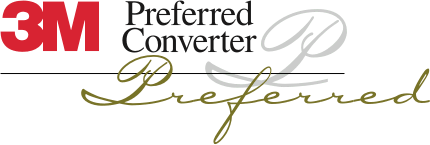Is your paint process one of the most scrutinized steps in your entire assembly process?
How’s that department performing? Experiencing any bottlenecks?
Whether manufacturing for automotive, military, aerospace, industrial, or electronics, every industry expects the highest quality product. And, with the painting process usually being quite complex, there can be many delays and rework.
Masking challenging areas and critical surfaces and components can slow things down, so paint department production is often seen as an area for improvement by production managers. So, we’re sharing some best practices that manufacturers can use when working with 3M automotive masking tape.
Die Cuts Simplify The Masking Process
Paint departments can make things easier on themselves by using die-cut masking tape components. Die cuts can be custom designed to the size, shape, or format that aligns with an organization’s masking process. Die-cut masking tapes can be supplied as parts on a roll of the liner, parts on a sheet liner, or stacks of individual pieces.
These formats allow production staff to grab the part they need, quickly and accurately place the masking tape die-cut, and move onto the next component that needs to be masked. This becomes a one-step process, eliminating the need for back-taping or using multiple strips of tape to cover a large surface area.
Tabs Allow For Easy Application
Die-cut masking tape components save paint departments a great deal of time, but some converters don’t take the time to understand their customer’s process and how die cuts should be designed.
Process knowledge is critical to product development engineers who can build tabs, or even extended liners, into the component so that production staff can easily apply the die-cut parts to their product.
Split-Back Liners Are A Great Option
If die-cut masking tape components on a roll don’t make sense for your assembly process, perhaps stacks of individual pieces are a better fit. In these instances, the liner backing that protects the adhesive is split into liners so that production staff can peel half the liner, place the masking tape part, and remove the other piece of the liner as the tape covers the entire surface area.
Slit Rolls Provide Exact Widths You Need
Fine line masking, trim, and other detailed applications present unique challenges. Instead of trying to make the best of a bad situation by using a standard width of masking tape, use masking tapes converted into custom width slit rolls.
Having masking tape in the widths you need is critical to saving money on materials and boosting the production of your process.
It’s not always about having the right tape, it’s about properly using that tape. For instance, some manufacturers use the right car paint tape — 3M automotive masking tape — but they implement back-tape techniques or multi-step/multi-tape processes. The problem is each of these techniques can be time-consuming, costly, and inconsistent.
In one real-life example, Strouse showed Letterkenny Army Depot how to properly use 3M automotive paint masking techniques, and they more than doubled their production process. Imagine the positive impact on that bottom line!

As a 3M Preferred Converter and 3M Master Masking Converter, Strouse’s experience and leadership in the industry has helped automotive, military, industrial, electronics, and medical manufacturers to improve their production and assembly processes.
Does your converting partner follow these 3M best practices? What else can they be doing better? Review our checklist, Choosing The Right Converter. It’s a simple quick-read that can prevent a lot of headaches. Just click the image below now.
.jpeg?width=290&name=0%20(1).jpeg)





